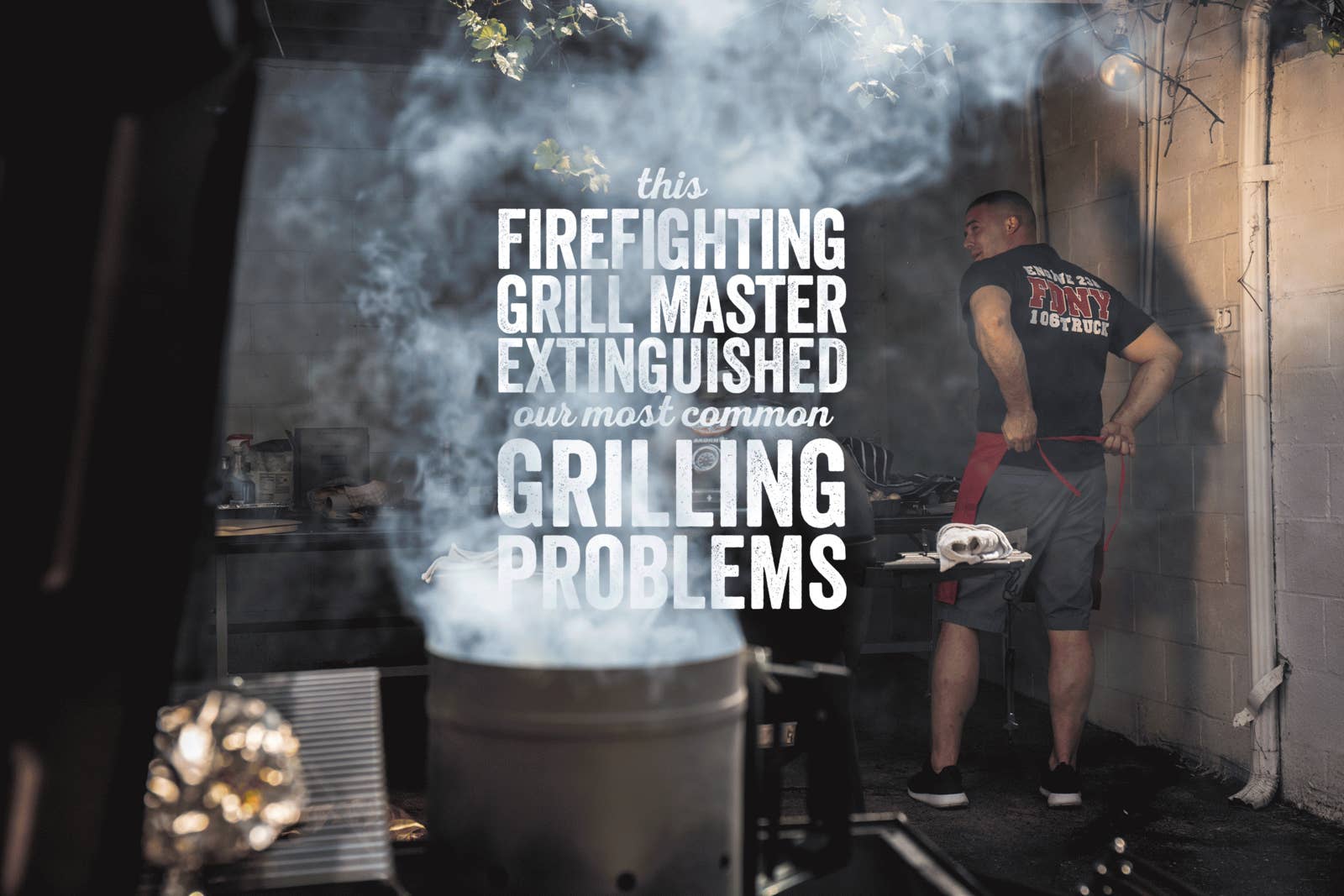
It’s a balmy 68 degrees. The sun has emerged from its seemingly never-ending slumber to let you know summer is finally here, which means shorts, rooftop parties, and, perhaps most importantly, barbecues. But if you’re someone whose culinary skill set revolves around a takeout menu and a microwave, alarms immediately start to ring at the thought of lighting charcoal and preparing a meal over an open flame. We’ve all turned steaks into shoe leather, charred chicken to a nice shade of black (while keeping it raw in the center), and left half a beautiful fish fillet stuck to the grill. It happens to the best of us — unless you’re full-time firefighter, part-time grill master Pete Roskowinski.
Stationed in Greenpoint, Brooklyn, this FDNY firefighter is sometimes responsible for cooking for all the brave men and women of Ladder Company 106 & Engine Company 238. But cooking for his fellow firefighters isn’t the full extent of Pete’s culinary expertise. His love of food began when he was a kid, growing up with a father who owned three restaurants. Pete then added tinder to his food passion fire by working every single job in the restaurant business; his résumé boasts being an assistant banquet chef catering weddings and proms, making fresh “mozz” and ricotta at an Italian specialty store, and tossing pizzas at Reggiano’s Brick Oven Pizza and Café on Staten Island.
We sat down with Roskowinski to extinguish some common grilling problems that we’ve all faced before. (Please read the following in a Staten Island accent.)

Problem: What’s the best way to light charcoal? Does it involve lighter fluid?
Pete’s Tip: Use a chimney to light your charcoal.
Pete Roskowinski: Invest in a charcoal chimney. It’s one of the easiest ways to light your charcoal. You don’t need to add any lighter fluid. Lighter fluid might add some unwanted flavor if you don’t burn it all off. With a chimney, all you have to do is light some newspaper or paper towel at the base of the chimney. I usually drizzle a little oil on my paper towel or newspaper before I light it. It makes it burn more slowly to allow all of the charcoals to be lit. You can easily tell when the charcoal is good to go when it starts to gray over.
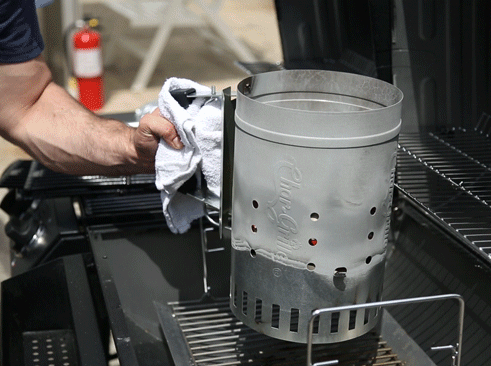
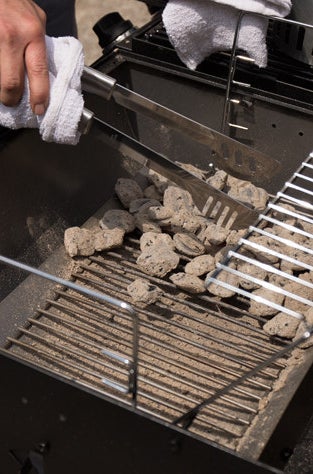
Problem: Some foods constantly keep burning while remaining raw on the inside. Is there any way to prevent that?
Pete’s Tip: Arrange your coals to allow for multiple temperature zones.
PR: When you’re grilling, different foods need direct and indirect heat. In direct heat, your food is directly over the coals. This is great for steaks, burgers, or anything that needs searing. When I’m cooking something that may require a longer cooking time, like chicken or fish, I set up an area where there is no charcoal. This makes an indirect heat zone. After my meat is seared, I move it over to the indirect heat area so it can finish cooking.

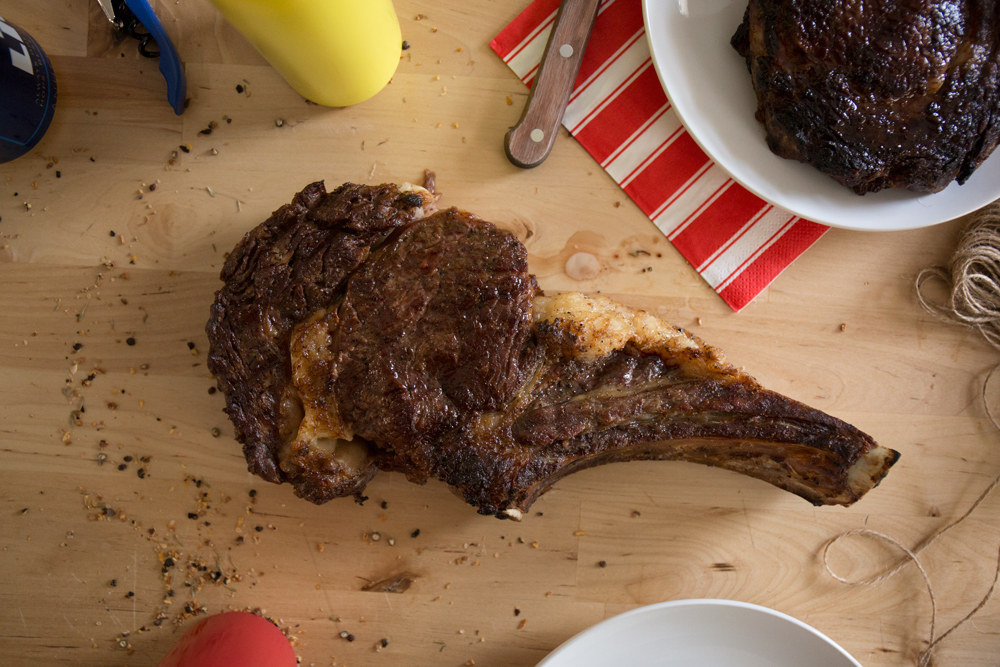
Problem: How do I know when my steak is done?
Pete’s Tip: Don’t cut into the steak to check its doneness. I use the hand test.
PR: Don’t ever cut into the steak to see if it's done cooking. The whole point of the sear is to lock in the juices. The second you cut into that steak while it’s cooking, you lose all of that. I personally use the hand test to see if my steak is done. If you’re a person into gadgets and being precise, I’d use a meat thermometer. Each doneness is a specific temperature. If you’re looking for a medium rare, like how I like my steak, it’s at 135°F. Also, it’s very important to allow your steak to rest at least five minutes after you take it off the grill. More juice and flavor will remain in the meat instead of all over your plate.
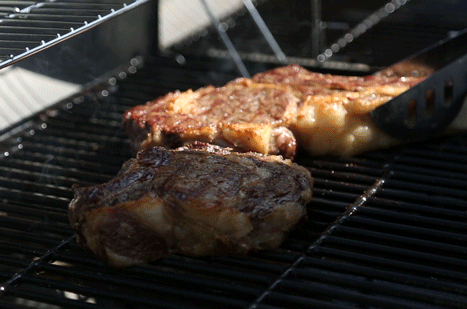

Problem: My burger patties balloon up when I cook them. How do I stop that?
Pete’s Tip: Create a dimple in your burger patty.
PR: No one likes a patty that footballs up. You need to do a good job forming the patty to stop this. After you get the patty to the relative size of the bun, add a dimple in the middle of the patty to stop it from ballooning up while cooking. Side note: I usually always go with an 80/20 (80% meat/20% fat) ground beef.

Problem: What’s the most important thing to remember when cooking with chicken?
Pete’s Tip: Do everything you can to avoid cross-contamination.
PR: Be sure to prepare chicken in a different area from the rest of the food. Always be mindful to constantly wash your hands after handling. You don’t want to grab spices with the same hand after touching chicken. Your spice rack will then be contaminated. I would even be cautious after you put the chicken on the grill. After that initial flip, I would either wash those pair of tongs or use a completely different set. I learned the hard way at a young age by being lackadaisical around chicken. I was working with chicken, didn’t think, and grabbed a big bite of my sandwich. And I was extremely sick for the rest of that afternoon. Enough of an unpleasant experience to make me overly cautious.
"Be open to learning from other cultures and cuisines."
Problem: How do you expand your grilling menu?
Pete’s Tip: Find culinary inspiration from others.
PR: We have so many great cooks in the firehouse. It’s such a diverse place. I come across things I had never even thought of making. We have this kid from Trinidad in the firehouse who taught me how to make oxtail and real jerk chicken. Then there’s this Ecuadorian guy who never cooked a day in his life before getting to the firehouse, but he’s become one of the best chefs I’ve ever met. He taught me how to make street corn. For me, I love being around different food and learning from a person from a completely different walk of life. So to answer your question, be open to learning from other cultures and cuisines.

Problem: How do I make sure my fish fillet doesn’t stick to the grill?
Pete’s Tip: Make sure the grill has high heat or grill on a cedar plank.
PR: You can do two things. I usually make sure the grill is hot enough. Then I put some vegetable oil on a clean kitchen rag and use a pair of tongs to coat the grates. After you form a good crust on the fish, you should be able to flip it without it breaking apart. Another way you can do it is to grill the fish on a cedar plank. No flipping is required, and it adds some flavor to the fish. Just place the plank in an indirect heat area and keep an eye on it. One thing to remember when working with the cedar plank is that you need to soak it in water overnight.
Problem: What kind of fish should I grill?
Pete’s Tip: The primo fish for the grill is swordfish.
PR: The go-to is big swordfish steaks. You almost never have a problem with them sticking to the grill. Also tuna steaks are great for grilling.

Problem: My skewer sticks keep burning. What do I need to do?
Pete’s Tip: Soak skewers for 10–15 minutes to avoid sticks burning.
PR: All you have to do is soak the skewers in water for a good 10 to 15 minutes before you start putting anything on them. Having them soak for this long ensures you don’t end up with those short, charred kebabs.
Problem: What kind of meat do I use? How do I prepare it?
Pete’s Tip: Cube meat into larger, similar-size pieces.
PR: You can pretty much use any meat in your kebabs. I’ve done everything from the primo NY strip to something you find on sale in the circular like top round. I usually do a pork tenderloin though. One thing to remember is to keep the cubes large and similar in size. They will work at an even rate and keep the moisture in.

Problem: Do I really need to make my own dough from scratch? How do I shape it?
Pete’s Tip: Pick up some dough from your local pizzeria.
PR: All you have to do is stop by the local pizza shop by your house and pick up some dough. Before you start working it, let it sit out at room temperature for 30 minutes. If the whole shaping and stretching dough is intimidating, just use a rolling pin. Just make sure your surface and rolling pin are floured. If you want a perfect circle, just use a pizza cutter to shape it into a circle.
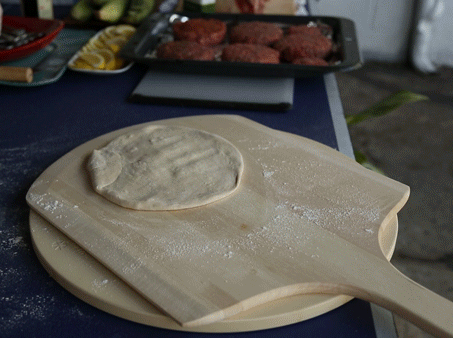
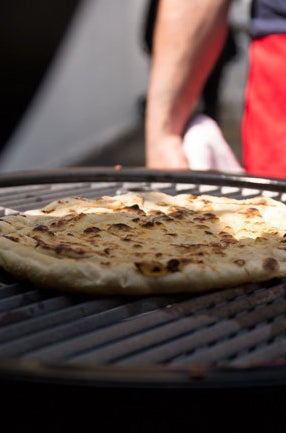
Problem: When I tried grilling a flatbread for the first time, the dough got stuck and became burnt. Is there any way to stop this?
Pete’s Tip: Use a pizza stone.
PR: I usually just make sure the grill is oiled up. Like I mentioned before, I typically use a pair of tongs and a clean kitchen rag that’s dipped into vegetable oil to grease up the grates. If this doesn’t work for you, I’d use a pizza stone on top of the grill. The pizza stone gives you peace of mind to turn the dough to a nice golden brown instead of black burnt color.
Take inspiration from Pete this summer and continue to try new techniques. Like anything, grilling isn’t all that bad after you learn a couple things. As Pete says, “Luckily for you, whatever you cook does not go under the critiques of a firehouse, where it could be the best thing in the world or the worst thing in the world, and guys will still bust your chops over it.”
All photos by Aubree Lennon & Sarah Stone/ © BuzzFeed
The grills featured in this post were the Char-Griller Duo 50-50 & the Char-Griller AKORN® KAMADO KOOKER™ available now at your local retailer.
